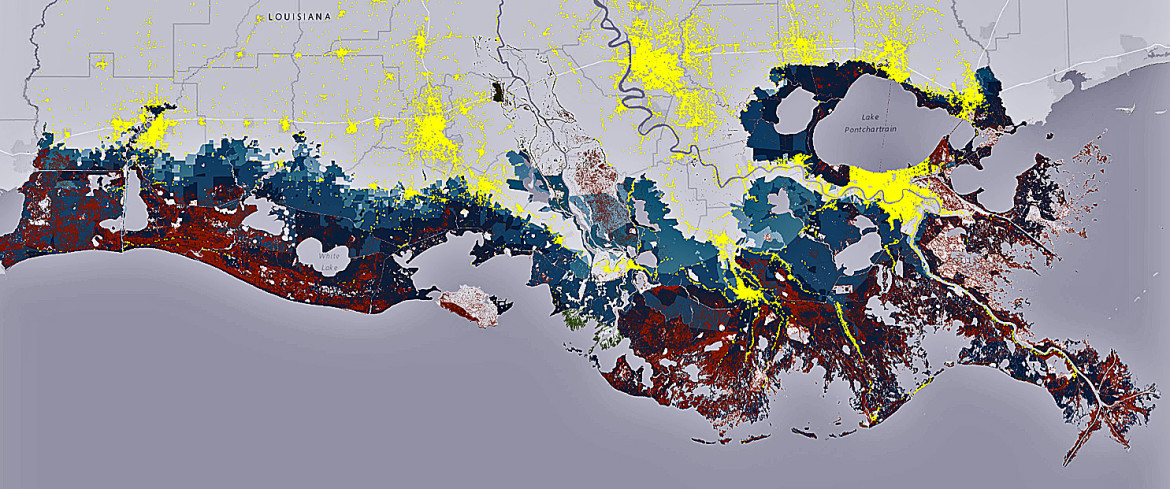
Continued coastal land loss in Louisiana could cost the state and national economies tens of billions dollars a year, and it could allow a single hurricane to deliver a $133 billion blow to the state, according to a new study by Louisiana State University and the RAND Corporation.
“Economic Evaluation of Coastal Land Loss in Louisiana” was commissioned by the state Coastal Protection and Restoration Authority to strengthen the state’s case for congressional help in addressing its long-running coastal crisis. More than 1,900 square miles of coastal wetlands have been lost since 1930, and at current rates another 1,700 square miles are predicted to become part of the Gulf of Mexico by the end of the century.
The state’s Coastal Master Plan, inaugurated in 2007, claims it could stop that loss by 2060, but recent analysis shows the state is about $70 billion short of its projected $92 billion cost.
The researchers estimated the economic toll 25 and 50 years into the future if nothing is done to stop land loss. The report relied on the two land-loss scenarios used in the master plan based on projected rates of sea-level rise and subsidence: moderate, about 10 inches; and less optimistic, about 17 inches.
Master plan estimates for project accomplishments are based on the moderate scenario.
A map charting the inundation of the coast under the two land loss scenarios shows key commercial hubs and communities being swamped, graphically outlining the impending economic disaster described in the study.
The report looks at losses directly related to permanent land loss, as well as storm damage losses, which are expected to increase as the wetlands that once buffered development disappear.
Among its findings:
- $2.1 billion to $3.5 billion in one-time costs to replace “capital stock” – mainly commercial buildings and industrial infrastructure.
- $5.8 to $7.4 billion annually in lost economic activity. It estimates between 800 and 1,200 businesses with be effected, endangering $2.4 billion to $3.1 billion in annual sales and payrolls of $400 million to $575 million.
- $5 billion to $51 billion in total lost economic output due to increased storm damage.
- $10 billion to $133 billion in increased storm damage to mostly commercial buildings and infrastructure.
The storm damage figures skyrocket because under the “less optimistic” rate of land loss, even New Orleans’ new, $14.5 billion levee system can be expected to fail, said LSU’s Stephen Barnes, co-author of the report.
